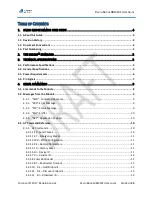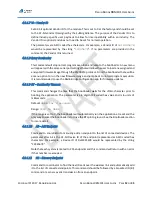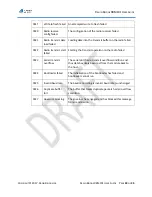
R
ADIO
B
RIDGE
RBM101
U
SER
G
UIDE
C
OPYRIGHT
©
2017,
R
ADIO
B
RIDGE
I
NC
.
R
ADIO
B
RIDGE
RBM101
U
SER
G
UIDE
P
AGE
15
OF
35
Range: 0000 to FFFF
4.3.1.19
QP - Queue Packet
This command is similar to the Send Packet (SP) command except it queues the packet to be
sent to a sleepy endpoint during the Listen Window. When the sleepy endpoint sends a
supervisory message to a coordinator, the coordinator responds with the queued packet
immediately and sends a status message back to the host indicating the queued message has
been sent.
This command is only valid for coordinator devices. If the destination endpoint is not sleepy,
this command will immediately send the packet similar to an SP command. See the section
on
Sleep modes
for more information.
4.3.1.20
ST
–
Supervisor Timeout
The supervisory function requires each endpoint to send a message back to the coordinator
on a periodic basis to indicate it is still alive and functional. When an endpoint is in sleep
mode, it will wake up temporarily to send the supervisory message and then re-enter sleep
mode automatically. This period should be as infrequent as possible and typically on the order
of one hour.
When the device is configured as an endpoint, this setting indicates the period at which it
sends the supervisor message to the coordinator. When the device is configured as a
coordinator, this is the window in which it expects to hear from each endpoint. If the
supervisor does not hear from an endpoint within this window it will send an error message
to the host. See the Supervisor section for more detail.
The parameter for the Supervisor Timeout is four ASCII coded hex characters with units of
minutes.
Default:
003C for 1 hour
Range:
0001 to FFFF
4.3.1.21
EE
–
Encryption enable
Enables encryption on the RF packets. The parameter value can be one of the following:
Note that larger values for the listen window gives the coordinator more
time to respond but at the expense of power consumption at the endpoint






























